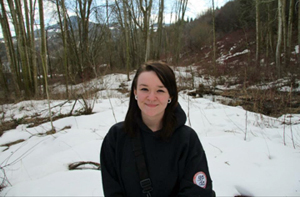
When Aryelle Attridge-Weeks aged out of foster care three years ago on her 19th birthday, all she got from her social worker was a tote bag to carry her stuff out the door of her foster home.
She didn't take much else. "I had a big Tupperware container, and I had a frying pan, I think maybe a blanket, some knives and forks," she said. "Little things."
But Attridge-Weeks considers herself lucky. Straight out of high school in Trail, British Columbia -- where she's lived for over a decade -- she had a part-time job at a call centre. She moved straight into her boyfriend's place and made enough money to cover expenses like clothes, phone bill and food. Her boyfriend covered the rest.
"I was really fortunate because I knew people that could get me that job," said Attridge-Weeks, now 21. "But not everyone has that chance -- mostly around here, [youth] work at McDonald's."
The foundation for her self-reliance was laid early: her foster parents insisted she work part-time starting at age 15. "They showed me how to be an adult, which was good," she said.
Attridge-Weeks spent almost seven years with the same foster family, but in her first year out of care she moved four times: first in with her then-boyfriend; then on her own; later with friends to cut down on costs; and finally with her current boyfriend.
In addition to a little sister adopted into another Trail home, Attridge-Weeks considers her foster-care givers family. But unlike most other kids striking out on their own, at the time she didn't feel she had the option to move back home if things got rough.
Foster kids aging out of the system have to be more resilient than most teenagers because their path to adulthood is often navigated solo. That's a distinct disadvantage in a country where over 40 per cent of 20 to 29 year-olds still live with their parents.
They're less likely than other youth to graduate from high school. There are no national numbers -- in fact, there's little national data at all on foster kids. But in Ontario, only 44 per cent of foster kids get a high school diploma, half the province's overall grad rate.
One out of two kids in care Canada-wide is indigenous -- hugely out of proportion to the less than 10 per cent they represent among all Canadians under 25. Indigenous youth also have higher rates of suicide, more often drop out of school, and are more likely to live in poverty.
So it isn't surprising many former youth in care end up on the street: almost half of an estimated 8,000 Canadian youth experiencing homelessness this year spent time in foster care or group homes. Many struggle to break the street life cycle, too: roughly one-third of Canada's 32,000 homeless adults come from the same background.
Learning from Scotland
Foster care is a provincial responsibility, with rules and regulations differing province to province. But all, said Stephen Gaetz, director the Canadian Observatory on Homelessness, share a lack of planning or supports for youth aging out of care.
A professor in York University's faculty of education, Gaetz started researching youth homelessness in Canada during the mid-1990s. Youth homelessness was rising at the time, thanks largely to the cancellation of the national housing program.
"I think for young people in Canada, things got much tougher" in the '90s, he said. "There were fewer jobs available; the jobs tend[ed] to be part-time and low-pay service jobs." Those challenges were steeper for former foster youth lacking the family support available to many of their peers with parents.
Gaetz sees scant evidence the situation has improved, and believes we need to spend more on preventing kids exiting care directly onto the streets.
He takes inspiration from Scotland, where youth stay in care until 21 and can seek extended support to 26. They can opt back into and out of care, too, even if they have returned to their biological families before turning 21.
Scotland also places more emphasis on graduating from high school and entering post-secondary. Community organizations, not child protection agencies, provide its youth services.
The University of Winnipeg and a handful of B.C. post-secondaries like Vancouver Island University, University of British Columbia, and the Nicola Valley Institute of Technology do waive tuition for youth formerly in care. But it's unclear how many youth take the schools up on the offer.
B.C.'s Ministry of Children and Family Development has funds for former foster youth's post-secondary education, too. Last year, Attridge-Weeks quit her call-centre job and used the ministry's Youth Education Assistance Fund -- a lump sum of $5,500 -- to enrol in the chef program at Selkirk College. She also receives about $1,000 a month while she's in school from the ministry's Agreements with Young Adults program.
But again, she's the exception. Approximately 1,100 youth age out of care annually in B.C., yet the ministry estimates that fewer than 1,500 youth have received the Youth Educational Assistance Fund since it began in 2002.
Attridge-Weeks isn't currently in the classroom. Instead, she's working part-time to get her chef apprenticeship hours. Still, she and her boyfriend, who also works part-time, struggle to make ends meet.
"We plan out every cent of the pay cheques he brings in, and whatever I have goes towards [the rest]," she said.
'This is still home for me'
Alternatives are available. Several provinces, including B.C., contract youth foster care out to provincial or community organizations.
Although foster care in B.C. is run by the Ministry of Children and Family Development, the province delegates some services to outside agencies, like the SOS Children's Village BC, one of two children's villages in the province that offer safe, long-term housing for foster children.
From the outside you wouldn't know SOS's five houses are any different than the other homes on their quiet suburban street.
Located in Surrey, there were 19 foster kids living in the village when Tyee Solutions Society visited in August. Another dozen were living elsewhere but received the same support, from counselling and cultural programming to funding for summer recreation.
SOS tries to keep kids and trusted foster parents in the village as long as they can, however. "We have one family that's been here since the inception of the village," said village director Kistie Singh. "As a youth transitions out, we want them to be able to come back and say, 'This is still home for me.'"
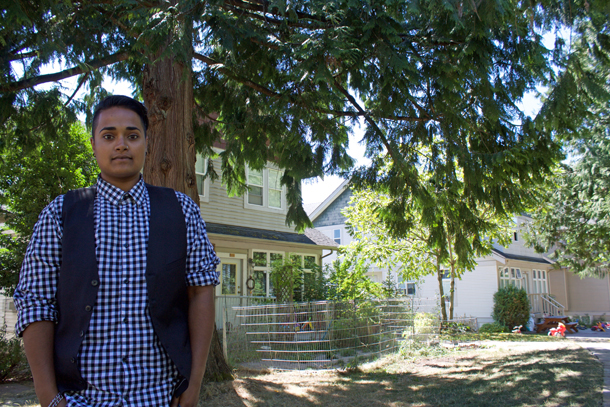
And when a youth ages out of care? SOS starts exit planning around age 16, and puts no pressure on youth to move out on their 19th birthday. It's up to the foster family whether to welcome a youth home again if they're struggling on their own.
Seven ways to improve
Thanks to a grant from the Vancouver Foundation, renovations will begin this fall to convert the unfinished basements of all five SOS houses into suites for youth, formerly in care or not, struggling with independence.
For Katie Perkins, SOS BC's transition to adulthood co-ordinator, seeing first hand what transition looks like for some foster kids drives home the need for units like these.
"Some report being dropped off at a homeless shelter on their 19th birthday by their social worker," she said. "Nobody thinks that's ideal, including the social worker. It's just [that] housing is so expensive."
Youth in the subsidized suites will also participate in a life skills program, learning to budget money, buy groceries, find a job, stay well and establish healthy relationships.
To researcher Gaetz, such programs offer "some good models and experiments, but I feel like a lot of it's tinkering."
Instead, he has seven recommendations to overhaul how youth leave care in Canada:
• Raise the exiting age of 18 or 19 in most provinces and territories when foster care ends, to at least age 24 or graduation from their first post-secondary program;
• Plan an exit strategy and start planning early;
• Give kids a say in the design of services and the types of services provided to them;
• Encourage high school graduation and fund the first post-secondary program;
• Fund community-based youth supports instead of province-wide services run by bureaucrats;
• Ensure youth have at least one adult in their life, family or not, whom they can rely on;
• If they leave care early, let them come back whenever they need to.
Gaetz believes these changes would eventually save society money now spent on homeless shelters and supportive housing. How much, he doesn't know, although he's working with York's Schulich School of Business to work the figure out.
But no matter the final price tag, he emphasizes it's an investment, not an expense.
"If we know there's this pipeline coming from child protection into homelessness, why is our response emergency shelters?" he asked. "Why aren't we making sure that that doesn't happen?"
If children in foster care are wards of the state, we're all their parents. If we don't expect our own teenagers to be out of the house -- and stay out -- on their 18th or 19th birthday, we need to rethink requiring the same of youth in foster care. ![]()
Read more: Education





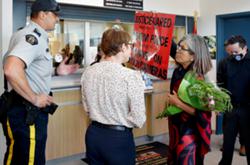

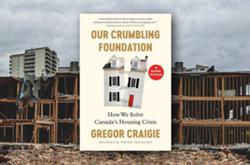


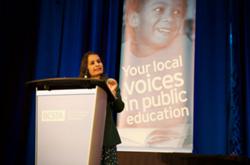





Tyee Commenting Guidelines
Comments that violate guidelines risk being deleted, and violations may result in a temporary or permanent user ban. Maintain the spirit of good conversation to stay in the discussion.
*Please note The Tyee is not a forum for spreading misinformation about COVID-19, denying its existence or minimizing its risk to public health.
Do:
Do not: